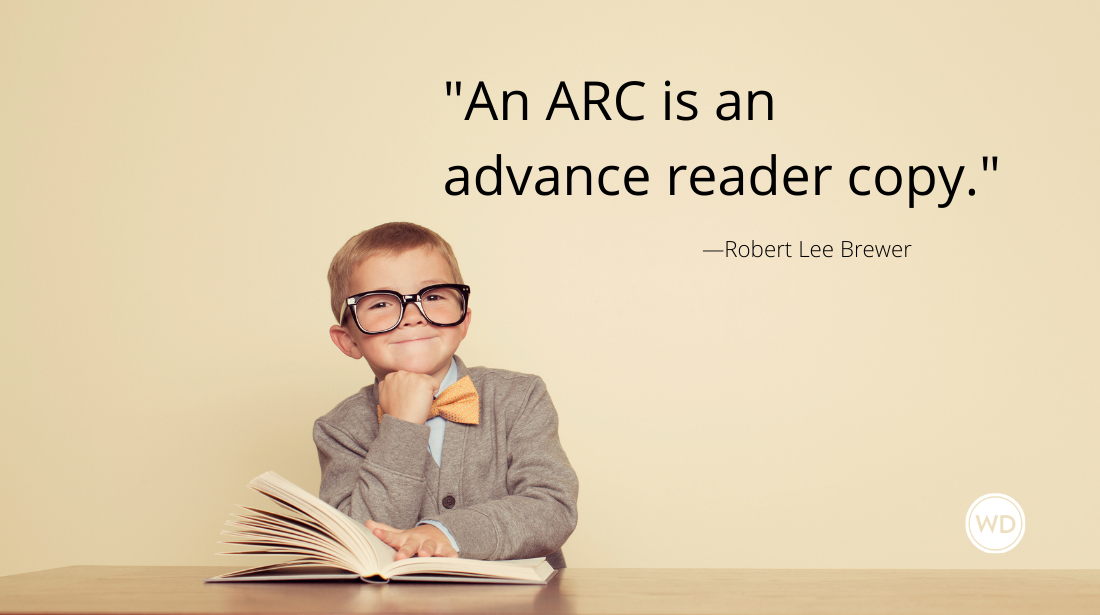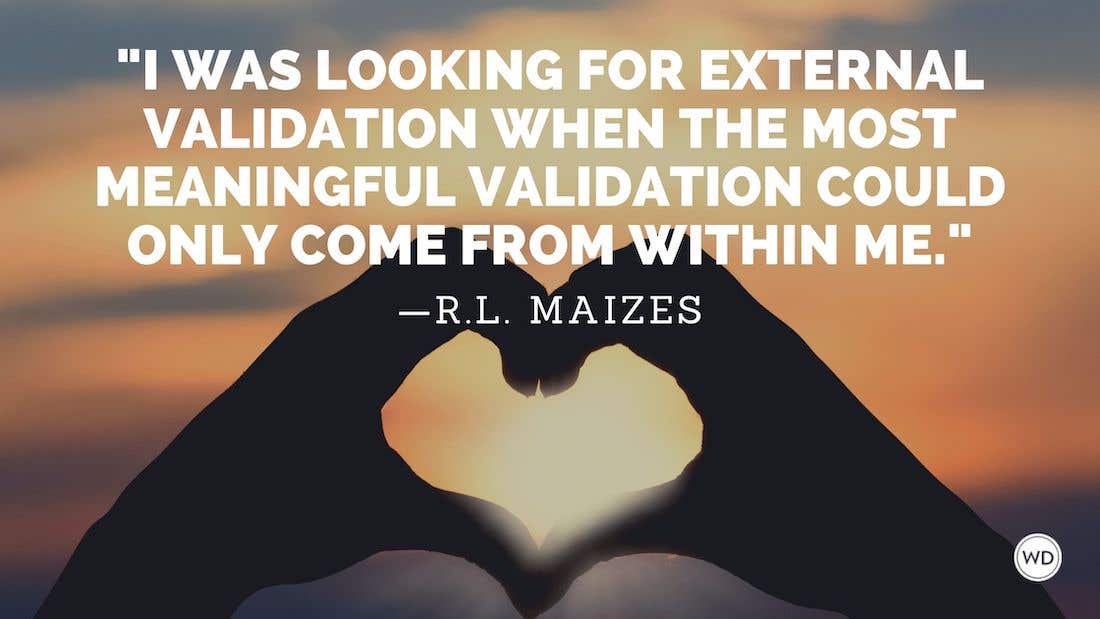What Every Writer Should Know About Book Covers (Plus: A Reveal!)
I’ve been eager to share my experiences and lessons learned as a debut novelist-in-progress, which means I (gladly, excitedly!) field a lot of questions from fellow writers and readers alike….
I’ve been eager to share my experiences and lessons learned as a debut novelist-in-progress, which means I (gladly, excitedly!) field a lot of questions from fellow writers and readers alike. And two of the most frequently asked across the board have to do with the same thing:
- Have you seen your cover yet? (Answer: No.)
- Are you nervous about it? (Answer: Trying not to be, but… well, yes.)
But today, I have better answers. Not only have I seen my cover and am I no longer nervous, but I get to show it to you! (OK, so maybe I’m still a little nervous—but in a good way.)
This post is by Jessica Strawser. Strawser is the chief editor of Writer's Digest magazine, where she often has the privilege of penning WD Interviews featuring writers she has long admired, including Alice Walker, David Sedaris and Stephen King. Her 15-year career in publishing has also included editing roles at a trio of nonfiction book imprints and even a brief stint in marketing and public relations. She's also a writer of women's fiction represented by literary agent Barbara Poelle, and—having first started querying agents for an entirely different, unsold novel back in 2011—is thrilled to be looking ahead to her 2017 debut novel, Almost Missed You, forthcoming from St. Martin's Press. She lives in Cincinnati with her husband and two young children. Connect with her on Twitter @JessicaStrawser and on Facebook, and visit her at jessicastrawser.com.
In the spirit of continuing to share the journey (see earlier steps here: How I Got My Agent—and Book Deal: WD Editor Edition; 10 Lessons Learned Behind the Scenes of a Book Deal), before the cover reveal let’s back up for an inside look at the design process, where the author fits in, and why the above FAQs are so frequently asked in the first place.
Why We Care So Much About Covers
We writers seem to be prone to anxiety where our covers are concerned, due I think mainly to three factors:
1) As most of us are voracious readers who spend a lot of time in bookstores and libraries, we understand that books are, in fact, quite often judged by their covers.
2) For almost as many of us, a book with our name on the cover is not just an opportunity we’ve happened upon, but something we’ve been dreaming of for years, even most of our lives.
3) We know that contractually, we don’t have approval over our cover—and most of us have heard a horror story or two about writers who’ve bad experiences with their design.
We can’t do much more than relate to #1 and #2, but I would like to help dispel some misconceptions surrounding #3.
Before I became editorial director of Writer’s Digest, I was a senior/managing editor for a handful of nonfiction book imprints over the course of several years—not including, of course, the work I still see my colleagues at Writer’s Digest Books do every day. I oversaw the editorial part of the cover design of those books, so this is a case where I came in with firsthand experience from the other side of the desk.
How Cover Design Works
Cover design typically starts with a meeting where the title and subtitle are refined. Then it moves on to a series of design presentations—which usually begin with several concepts presented, and then (unless none of those strike a chord, in which case the designer goes back to the proverbial drawing board) one or two selected to further revise and then refine, again and again and again until editorial, design, marketing and sales reps involved all agree that we’ve gotten it right.
In those meetings, each person involved knows her place and tries to advocate as best as she can while respectfully staying in her lane. Editors are there because they know the content best of anyone in house, and they may also be able to speak to the author’s expectations or tastes. Sales and marketing deliver the most informed market perspectives, which are given a lot of weight because publishers understand that covers are first and most a sales tool (see # 1 above). Designers translate verbal feedback into visuals, up the creativity and do their best to take everyone nitpicking at their work in stride (none of which is easy, I might add).
By the time an author sees the cover that comes out of this process, it’s very likely been through many incarnations he’ll never even know about. Oh, to be a fly on the wall, eh?
What Every Writer Should Really Know
It’s true that authors almost never contractually have approval over their covers, though they do sometimes have something called “consult” or “consultation” (often negotiated into the contract by an agent). But I’d like to take a moment to assuage some fears: At every one of the imprints I had a hand in, if an author was unhappy with his cover design, never once were we unwilling to hear that feedback and at least attempt to arrive at a solution. In some cases, we worked very hard to make sure everyone was happy.
(Hint: If you have an agent, take any concerns to her first and let her either advise you or take the lead on the conversation from there. You have representation from someone who has been through this process many times over, so use it. If you don’t have an agent, try to focus any constructive comments on concrete things—where you visualize your book fitting in, and why this doesn’t fit with that vision—rather than being overly emotional or unkind.)
Covers are tricky in part because they represent our books at the exact intersection between the personal and business aspects of writing. It’s our baby, and we care very much how it is presented to the world, but it is also a sales tool.
Remember: Publishers and authors are on the same team. [This is a sentiment echoed in a recent guest post by my former colleague and fellow nonfiction-editor-turned-novelist Meg Leder: How Being an Editor Helped Me Be a Better Writer (and Vice Versa)] No publisher wants its authors to dislike their covers. Everyone is trying to do what’s best for the book. We are all quite literally invested in the support of the same end goal: To sell lots of books and thrill our readers enough that we get to keep doing what we love.
How It Worked for Me
So, how did knowing all of this going in affect me during my own novel’s cover design process?
Well, I could guess at some of what might be going on behind the scenes, which was probably both good and bad. I knew my design could be tricky in part because my book isn’t neatly categorized—it’s upmarket women’s fiction with elements of suspense, a story some might refer to as “high concept,” which is a fancy way of saying it’s not easy to convey at a glance (something a cover, by definition, has to do).
But I also knew that my cover would be created, evaluated and scrutinized by people who know the market inside and out, and who have far more expertise both in design and on the shelves than I do. This, by the way, is why it’s so important to feel good about the agent (where applicable) and publisher you choose to sign with: Because ultimately, you just have to trust that you’re in good hands.
I was lucky from the get-go. My editor, Holly Ingraham at St. Martin’s Press, initiated a conversation up front with my agent and I about our wants and our do-not-wants before her first cover design meeting (not every editor/publisher does this, as there’s no obligation to do so, and I was so grateful to have been asked). And then … the wait began. I heard nothing about the cover for a month, then two.
If my previous experience had taught me anything, it was not to have a picture in my head of what I hoped it would look like. So I tried very hard not to think about it.
And then, a cover mockup arrived, with a note from my editor assuring me of the excitement and support it had received in house. I’d been trying so hard to stay open-minded that I simply stared, taking it in. My initial reaction was pure relief. Whew! I didn’t not like it! Next came a fluttery feeling in my chest. That was my name! In a font! On the cover of a book that I wrote!
I stared at it some more. I was so used to picking covers apart in my editorial role … but I really did sort of like it quite a lot, actually.
My agent called. She loved it, but she wanted to know what I thought. “I think I like it.” It was Friday. “Can I sit with it for the weekend, just to see how it feels?”
“Of course,” she said. “Just email Holly and let her know. She’ll be anxious to hear what you think.”
“I bet you get this a lot, huh?” I asked.
“Nope,” she said cheerfully. “Most people either love it or hate it immediately!”
There was then a beat of silence where we both thought about how strange I am.
Feeling not at all self-conscious, I went home and hung the cover in my kitchen.
By the end of the weekend, I loved it.
Today, I love it even more.
My editor has since told me the backstory behind the design. There were lots of variations—and just as I’d suspected, it was balancing the themes and feel of the book that was the biggest challenge. She said they all looked either too ominous, or too much like cozier beach reads. And then came one that was quite pretty—but too pretty. As they were staring at it, the group’s publisher, Jennifer Enderlin, pointed to the picture on the cover. “Rip it up,” she told the designer. “Literally.”
And that's what they did! (HUGE thanks to the talented designer Danielle Christopher for making my book look so good.)
And without further ado, here it is:
Curious to learn more about the book? Read the full catalog description of ALMOST MISSED YOU (forthcoming in March 2017) along with some of the amazing early endorsements that I’m humbled to have garnered. If you like what you see (or know of another reader who might), ALMOST MISSED YOU is officially available for preorder now!
It’s a privilege to share the dream with you, and I can’t tell you how much I appreciate the support.
Get Feedback (from an Agent) on Your Plot for One Flat Price
You'll Love This Plot Critique Service If:
—You're looking for a professional critique of your plot
—You want to know what an agent thinks about the strengths and weaknesses of your plot
—You want a clear idea of how to revise your plot to ensure the most compelling story
Brian A. Klems is the former Senior Online Editor of Writer’s Digest, and author of Oh Boy, You’re Having a Girl (Adams Media/Simon & Schuster). Follow him on Twitter @BrianKlems.








